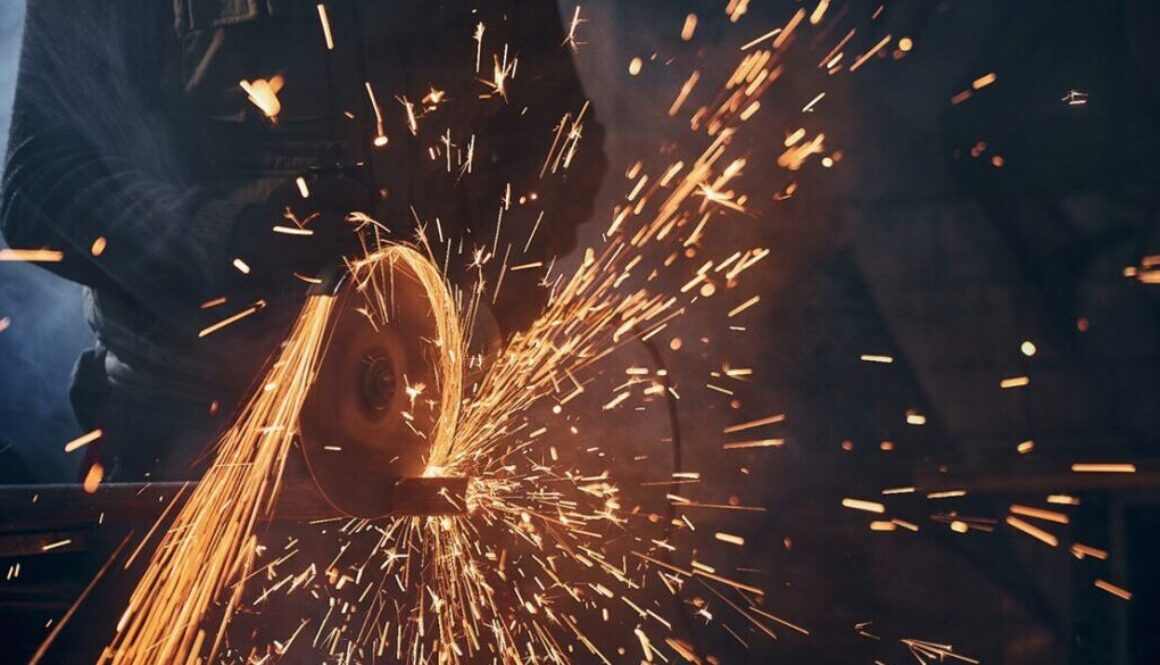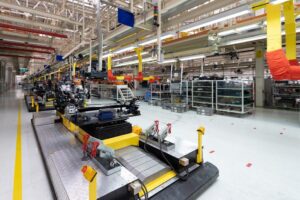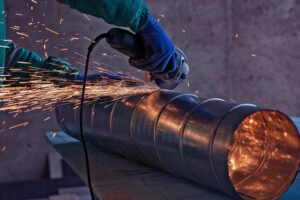Welding and brazing: differences and what they are about
Ever heard of welding and brazing?
Several methods are used when it comes to working with metals.
In the previous article we looked at that of investment casting.
What do you think of finding out about soldering and brazing?
Are you ready?
WELDING AND BRAZING: WHAT THEY CONSIST OF
Let’s start by saying the most important thing.
What specifically do these two operations fulfill?
In the field of metalworking, they are methods used to find continuity between two materials, effectively making a permanent union.
Not only the field of industrial equipment
It should be noted that these two techniques find wide application not only in the field of industrial equipment.
Let’s keep in mind that this procedure is also widely used in the field of electrical engineering.
And that’s not all!
Even those engaged in the field of service and repair of electronic equipment have a soldering iron in their toolbox.
Obviously, these are different soldering methods – soft soldering – from those used for industrial equipment, but the principle remains the same: to join materials, ensuring their continuity.
In this article we will deal with welding and brazing that most closely concern Pantalone: industrial equipment such as flanges and fittings.
Welding and brazing operations carried out in environments such as factories and construction sites.
How long have welding and brazing been around?
Man’s need to join materials into a coherent structure goes back a long way.
After all, the progress of civilization is based on technology: on practical skill and new methods capable of refining this ability.
Certainly, the joining and casting of metals is one of those things capable of taking human history forward a few steps.
A skill that has developed in small steps; but not too many either.
In 5000 B.C., metals such as gold, copper and silver were being joined together to make jewelry and objects of worship.
The use of tin as a soldering material gave a strong impetus to the evolution of metal joining operations.
In ancient Rome, the entire network of aqueducts was created through the joining of lead pipes; while, as for the working of baths, these were created through the soldering of bronze sheets.
Increasingly sophisticated welding and brazing
Throughout history, soldering and brazing operations have become embellished with increasingly sophisticated techniques, until they have found success in even the most unthinkable fields, such as electrical engineering.
It is estimated that without sophisticated soldering technologies, the mass market for electronic boards would not have the numbers we see today.
But the field of fittings, metals, and industrial equipment would be equally affected.
ESSENTIAL TERMINOLOGY FOR SOLDERING AND BRAZING OPERATIONS
With the understanding that the terms welding and brazing refer to joining operations between metals, it is necessary to mention what is the essential technical terminology for navigating this subject.
Without certain terms it is difficult not only to understand how these operations are carried out; but even the fundamental difference between them.
When performing welding and brazing operations, there are two basic elements to consider.
Basic materia
Material consisting of the parts to be welded.
It can be of two types:
- Homogeneous: if the metal material is the same for both parts;
- Heterogeneous: if the materials are different in nature.
If you are wondering which metals are most commonly used for these operations, let us answer immediately with steel, aluminum alloys, nickel and titanium.
Some polymeric materials can be used for welding; but only thermoplastic ones.
Needless to say, when welding, the first thing to ask is whether the base material lends itself to the creation of a stable and solid structure.
Some technical characteristics of the metal such as specific power and welding speed must then be considered.
Filler material
This is the material introduced between the parts to be joined.
This comes in the guise of strips, wires and rods and is deposited in a molten state between the materials to be joined.
The molten material presents itself as particularly pure: the impurities found during evaluation, therefore, are to be attributed to the base material.
It should be noted that filler material is not always used in these operations.
DIFFERENCES BETWEEN BRAZING AND SOLDERING
The differences between welding and brazing are based on the different techniques used on the base material and the filler material.
- Welding: in this process the filler material is not always used. Fusion is localized; limited to the parts that would be joined.
- Brazing, or braze welding: The base material is not melted, but welded. Fusion occurs with the filler material, having a lower melting temperature than the base material.
Which of the two techniques gives a better yield?
Difficult to answer, since both techniques possess their own specificity, and are not applicable in every context.
Broadly speaking, we can say that brazing offers greater stability than welding; however, the brazing operation is much more complex.
It requires the right equipment and protective devices.
It should be added, then, that not all materials are able to withstand such high temperatures.
WELDING: A COMPLICATED WORLD
Welding is a very complicated universe.
Various techniques have been refined over time: modulated according to new technologies and according to the material adopted.
To make a specific classification is a complex matter and would require a lot of space.
Here, it cannot be done in any other way than at the macroscopic level.
Distinction based on technologies
There are many technologies used in welding processes.
These technological systems have been implemented in industry: especially in the field of heavy metal processing.
The distinction is made according to the technology used to produce heat and thus melt the designated material.
- Arc welding: This is based on an electric arc drawn by two electrodes. The electrode can be fusible and non-fusible – in the former case it provides the filler material during fusion, in the latter the filler material is added separately – and enjoy either a direct or alternating current supply.
- Resistance welding method: In this case there is no use of filler material. Welding is done by passing electrical energy into the area to be joined, due to the resistance generated.
- Oxyacetylene welding: a flame that comes from the combustion of acetylene and oxygen is used as the heat source.
- Concentrated energy welding method: this is welding that relies on very sophisticated and localized heat generation technologies, with powers ranging from a few thousand to several million watts. We are talking about laser ((LBW), plasma (PAW) and electric beam (EBW) welding.
Distinguishing operator-side welding processes
Various technological processes assign different weight to the operator than was once the case.
Based on this, a second classification can be made from the role played by the operator in the context of new welding technologies.
What was once manual has been completely replaced by machines; however the skill of the operator, including in consistently conducting machine operations, remains essential.
Considering this, we can distinguish the following types of welding.
- Manual welding: in this case, the responsibility lies mainly with the operator in operating and modulating the electrode or heat source. This is especially true for coated electrode or oxyacetylene welding.
- Automated welding: electrodes and heat sources are automatically adjusted by a device, measuring the correct distance from the workpiece and moving them along the welding line. This is the case with submerged arc and concentrated energy welding.
- Semi-automatic welding processes: this is a mixed process, where automatic processes of electrode feeding and constant parameter maintenance are assisted by an operator, who guides the electrode with respect to the welding lines.
- Robotic welding: a fully automatic process. The steps of the welding operation are assigned to a robot and advanced technology systems. Industrial robots are mainly used in electric arc welding under gas protection and laser welding. Widely used in the field of automobile manufacturing, especially in the final stages of body assembly.
WELDING AND BRAZING: OPERATOR SAFETY
A mention should be made of the protective equipment that operators should adopt.
Welding and brazing are very dangerous operations if not carried out with the utmost care.
Very high melting temperatures necessitate the protection of heat-resistant clothing.
Some welding methods, for example arc welding, involve the production of electromagnetic radiation that is harmful to the eyes.
It is therefore necessary to cover the eyes by wearing an obscured mask.
For metal dusts and vapors, generated in both welding and brazing, appropriate ventilation and aeration systems are required.
Result evaluations
Then there are various tests and evaluation systems to measure the result obtained from welding processes.
There are nondestructive tests and some more invasive ones.
The first necessary evaluation is certainly the inspection that takes place under the eye of an expert: distortions and any geometric anomalies with respect to the design are identified.
This is followed by volumetric inspections and assessments with liquid penetrants.
Effective are all those procedures capable of detecting the purity of the metal composition: such as 100% PMI, often used by Pantalone.
PANTALONE’S PRODUCTS
Now that we know more about brazing and soldering processes, how about taking a look at our items?
Our catalog boasts more than 50 thousand items including flanges, fittings, and piping, all obtained by certified processing methods such as those described.
The Ukrainian situation is causing serious difficulties for our industry: if you are a company in need of new material, we advise you to stock up abundantly.
We at Pantalone are always on the front line to ensure that customers have maximum availability.
Finally, for more interesting facts about the world of industrial equipment, keep following our blog.



